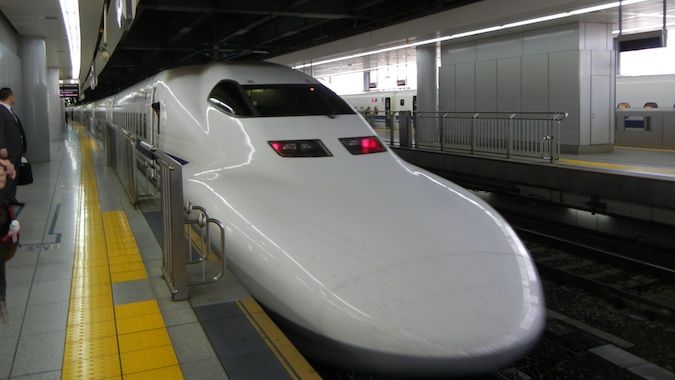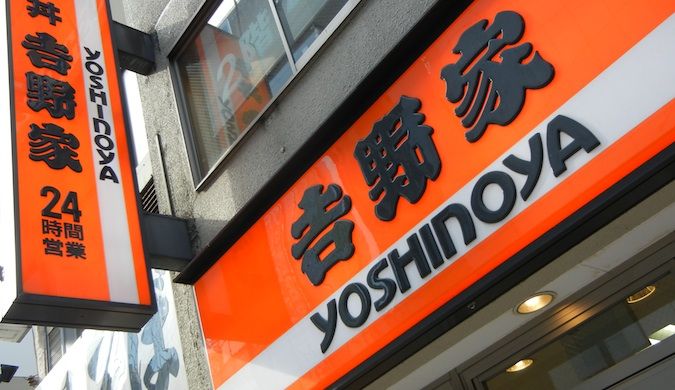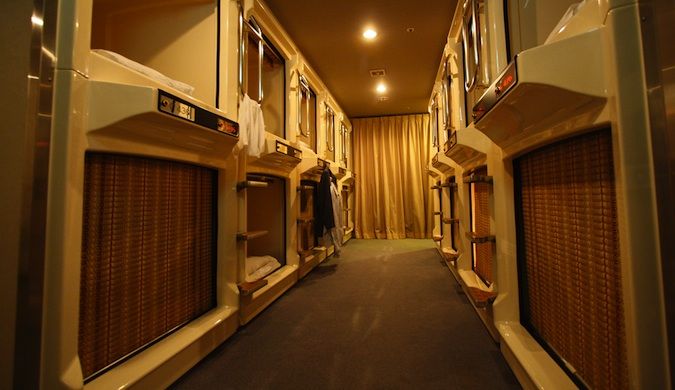
Updated: 7/5/2018 | July 5th, 2018
For years, I put off going to Japan because I was afraid of how expensive it would be. The rumors I’d heard about the country’s high prices made me hesitant to go. I’ve always loved Japanese culture, and I knew any visit would involve gorging on sushi and ramen, visits to lots of temples, and heavy train travel through the countryside. And the thought of how much that would cost always made me think, “I’ll wait until I have more money.”
When I finally visited in 2011, I was shocked to discover that, while it isn’t cheap, Japan isn’t the prohibitively expensive country people may think it is. In fact, I actually found Japan to be very affordable and on par with (and sometimes cheaper than) countries in Western Europe. In subsequent visits, I’ve learned to further master the country and turn high-cost Japan into an affordable place to visit.
Here’s how much things typically cost in Japan and how you can cut down your expenses to visit Japan on a budget and save lots of money!
Note: 110 JPY = $1 USD
Saving on Transportation in Japan

Trains
The bullet train, while awesome, comfortable, and fast, is not cheap. Individual tickets can cost hundreds of dollars. Yet I think train travel is the best way to see the country, so in order to reduce your train costs, get a Japan Rail (JR) pass. The pass is indispensable for travel in Japan.
These passes cost 28,300 JPY for 7 days, 45,100 JPY for 14 days, and 57,700 JPY for 21 days. All pass times are for consecutive travel. Even if you just get the seven-day pass, it’s the same price as a round-trip train ticket from Osaka to Tokyo (14,250 JPY each way!). Moreover, these JR trains also serve local city areas and so can be used intra-city. I used my pass to get around Kyoto and Tokyo instead of buying metro tickets. So even if you aren’t going to do much travel around Japan, buying a pass is better than buying individual tickets. While the high price of the pass can cause sticker shock, the alternative is even worse.
Though the pass can be up to 20% cheaper to buy online before you arrive, you can now purchase a Japan Rail Pass in Japan. Passes are available in the following country locations: Sapporo, Sendai, Niigata, Tokyo, Shinjuku, Yokohama, Nagoya, Osaka, Hiroshima, Takamatsu, Hakata, New Chitose Airport, Narita Airport, Haneda Airport, and Kansai Airport.
Metro
Most of the city metro tickets cost 100–200 JPY for a single journey. (The price varies by distance and may often be higher.) Fares were usually around 220 JPY to travel across Tokyo but less for shorter distances. In most major cities, you can buy a day pass, which gives you unlimited travel for 24 hours for around 800 JPY.
Buses
Buses are a less expensive alternative to the bullet train system in Japan, but they take more time. For example, the two-hour bullet train ride from Tokyo to Osaka becomes a ten-hour bus ride. The price for that seat is 4,500 JPY, but at some point, you need to think about how much your time is worth. For me, saving some 10,000 JPY was not worth the extra seven hours of travel, since I had such limited time during my visit. If I’d had more time, I’d have simply taken the bus. There are also bus passes available that offer unlimited travel and begin at 10,000 JPY for three non-consecutive days of travel.
Flights
Flying has become better option these days. There are many budget carriers now serving Japan, and a flight search on sites like Momondo or Skyscanner will reveal them. In general, their prices are on par with bullet train tickets. ANA also offers a special last-minute $100 fares via a hidden page on their website. It’s only available to foreigners and can sometimes be cheaper than the flights you find on Skyscanner, especially for longer routes around the country.
Saving on Food in Japan

Surprisingly, I found food to be inexpensive in Japan. True, I have a sushi addiction that dramitcally increased the cost of my trip but, overall, I found that I was spending far less on food than I’d anticipated.
As long as I didn’t feed my sushi addiction, I found I could eat for less than 1,500 JPY per day. Some typical prices were:
- Sushi lunch sets (sushi, soup, salad): 1,600+ JPY
- Traditional Japanese set lunches: 1,200+ JPY
- Sushi trains: 100–500 JPY per meal
- Small pasta: 399 JPY
- Western set menu (sandwiches, burger, pizza, etc): 1,200 JPY
- McDonald’s Value Menu: 600 JPY
- Ramen: 700 JPY
- Tempura dishes: 80–120 JPY
There’s an array of cheap food options in the country, and you don’t really need to spend much money on food. You can save money on food in Japan by doing the following:
- Eat at “100-yen” shops – There are many 100-yen shops in Japan, where set meals, groceries, water, toiletries, household items, and more are simply 100 JPY. I did all my shopping at these stores. Their names vary by region, so ask your hotel/hostel reception where the nearest 100-yen shop is located.
- Use sushi trains – Sushi in Japan is delicious at all levels. While I had a few fancy, sit-down meals, you can’t beat the sushi trains for value. At 100–170 JPY per plate, I could stuff my face for less than 1,500 JPY most of the time. I usually just ate at sushi trains.
- Eat at 7-11 – 7-11, Family Mart, and other corner stores have a lot of pre-set meals for 100–300 JPY that make for cheap lunches. Additionally, supermarkets have many set meals at similar prices. I noticed this was a popular option for many Japanese people.
- Cook your food – Hostels have kitchens, where you can cook and cut your food expenses to less than 800 JPY per day, especially by shopping at the 100-yen stores.
- Avoid fresh fruit – The one rumor about Japan that turned out to be true was that fresh fruit and vegetables were expensive. Outside of shopping for an apple or banana at the market, I generally avoided fresh fruits and vegetables. They were too expensive.
- Eat curry, ramen, and donburi – I essentially lived off these three foods during my three weeks in Japan. Curry bowls are as cheap as 280 JPY per plate. Donburi, bowls of meat and rice, are around 400–500. Ramen is never more than 700. These are the best ways to eat cheap and filling meals in Japan.
Saving on Accommodation in Japan

Living costs in Japan are incredibly high, with limited space, lots of people, and high housing prices. And those high costs transfer over into the tourism industry, making finding cheap accommodation a real pain. Hostel dorms typically cost 1,900 JPY per night (sometimes as low as 1,500 JPY or as high as 2,700 JPY in Tokyo) and hotel rooms start at 5,000 JPY per night or more. Here are some ways to save on accommodation:
- Work for your room – Hostels in Japan let you stay for free if you clean for a few hours a day.
- Couchsurfing – Hospitality exchanges are not as widespread in Japan as elsewhere in the world, but there is a small, active Couchsurfing community here. Make sure you request rooms well ahead of time to increase your odds of success. Read more about Couchsurfing here!
- Use credit card points – It’s times like these that those credit points I talk about come in handy. Frequent flier miles and regular hotel points can be redeemed for lots of free nights. I used my free accumulated nights from hotels.com for two free nights in Tokyo, but with the large sign-up bonuses right now for hotel cards, you can get up to a week’s free accommodation!
- Capsule hotels – A step up from hostels and a step down from hotels, capsule hotels (pictured above) are tiny capsules you sleep in. You share bathrooms and common areas, and your capsule has a light, outlet, and sometimes a small television. They are frequently used by businessmen who work late. These capsules begin at around 2,700 JPY per night.
Saving on Accommodation in Japan

Most of the attractions were very cheap. I didn’t spend more than 500 JPY per museum or temple. In Kyoto, there’s a temple pass that gives you unlimited transportation and access to the temples for 1,200 JPY. It’s a good deal, considering you’re probably going to see a lot of museums in Kyoto. Osaka and Tokyo had similar passes for their attractions.
Overall, I found these passes to be the best way to save money on temples, museums, and other attractions. Additionally, there are many free gardens, temples, and parks! I hardly spent any money on attractions while I was in Japan.
How much money do you need to visit Japan?
Japan has an image of being one of the most expensive countries in the world, and if you’re staying in hotels, eating out, and traveling around a lot, it can be. You can easily spend over $200 USD per day by traveling that way. However, I don’t think a trip to Japan needs to be that expensive.
Staying in a hostel, buying a rail pass, eating relatively cheap food, and visiting a few attractions will cost around $100 USD per day. A 21-day trip would cost at least $2,100 USD (plus flight). For that much money, you can go to Southeast Asia for months!
Instead, by utilizing the tips above, I think you can travel Japan on $70–75 USD per day. This would mean more bus travel, a (very) limited amount of sushi, only cheap restaurants, and the occasional night Couchsurfing (or other free accommodation).
On a bare-bones budget, you can get by for $50 USD per day if you stick to Couchsurfing, cheap food, bus travel (trains would be far too expensive), and only free attractions. I saw lots of travelers in Japan traveling on the cheap. They did it, and it’s possible — but you’ll never feed your sushi addiction if you travel this way.
To me, budget travel is value travel. Japan is never going to be as cheap a destination as Cambodia, Ukraine, or Peru, but there are ways to save money in every place in the world, and Japan has plenty. Japan will never cost $20 USD per day, but it also doesn’t need to cost hundreds. There’s plenty of ways to travel Japan on a budget.
Book Your Trip to Japan: Logistical Tips and Tricks
Book Your Flight
Find a cheap flight to Japan by using Skyscanner or Momondo. They are my two favorite search engines. Start with Momondo.
Book Your Accommodation
You can book your hostel in Japan with Hostelworld. If you want to stay elsewhere, use Booking.com as they consistently return the cheapest rates. (Here’s the proof.)
Don’t Forget Travel Insurance
Travel insurance will protect you against illness, injury, theft, and cancellations. I never ever go on a trip without it. I’ve been using World Nomads for ten years. You should too.
Need Some Gear?
Check out our resource page for the best companies to use!
Want More Information on Japan?
Be sure to visit our robust destination guide on Japan for even more planning tips!
The post How to Turn High-Cost Japan into a Cheap Place to Visit appeared first on Nomadic Matt's Travel Site.
July 05, 2018 at 06:54PM
fom https://ift.tt/2ubPpHj
by IHholiday Travel trip
No hay comentarios:
Publicar un comentario